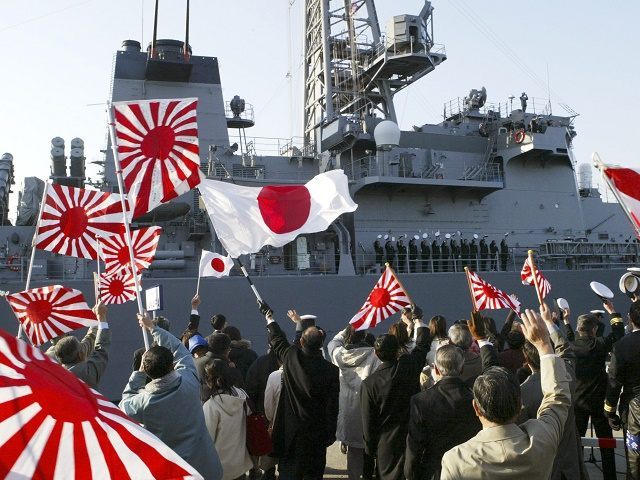Indian and Japanese warships conducted a joint naval drill in the Indian Ocean on Saturday, in an exercise involving two vessels from each country’s navy, the Hindustan Times reported on Monday.
The Japan Maritime Self-Defense Force (JMSDF) confirmed the military drill, describing it as designed to “promote mutual understanding” between the navies of India and Japan. The Japanese navy shared photos of the exercises in an official social media post confirming the event over the weekend.
“[T]he Indian navy training vessels, [the] INS Rana and [the] INS Kulush, were joined by the Japanese navy’s JS Kashima and JS Shimayuki,” according to the report.
The Japanese Embassy in New Delhi also commented on the joint drill, reportedly the 15th exercise of its kind in the past three years. “The content of this exercise is tactical training and communications training … with no specific scenario,” Japanese Embassy spokesman Toshihide Ando said, according to the Hindustan Times.
Although now routine between India and Japan, the latest joint naval exercises between the two nations come just two weeks after India had its first deadly military conflict with China in 45 years. On June 15, at least 20 Indian soldiers were killed by Chinese border troops in a reported ambush by China’s army in the western Himalayas.
The China Coast Guard has likewise been harassing Japan recently by belligerently patrolling Japanese waters, especially around the disputed Senkaku Island chain, valuable for its strategic location and nearby undersea oil reserves. Although China illegally lays claim to the archipelago, the uninhabited islands are Japan’s sovereign territory. On June 17, Tokyo filed a formal diplomatic protest against Beijing for the incessant aggression, which at that time had continued unabated for a record 66 days.
“The Senkaku Islands are under our control and are unquestionably our territory, historically and under international law. We believe it is extremely serious that these activities continue. We will respond firmly and calmly to the Chinese side,” Japan’s Chief Cabinet Secretary Yoshihide Suga said of the diplomatic protest.
Of Saturday’s joint naval drill, Vice-Admiral Pradeep Chauhan, director-general of India’s maritime think-tank, the National Maritime Foundation, said: “We are using the exercises for strategic communications.”
The navies were “not there for combat purposes but for signaling. We need to be proximate with our friends and the Chinese know there is a direct ladder of escalation between Japan and the United States,” Chauhan told the Hindustan Times.
Although Saturday’s joint navy drill was “largely a PASSEX exercise (passing exercise), it definitely amounts to some strategic signaling for China,” Indian military sources reportedly told the Times of India on Monday, supporting Chauhan’s statements that the exercise was largely “signaling” to China.
The Indian Navy recognizes the JMSDF as one of its top allies, according to the Hindustan Times. “Indian naval ships exercise both bilaterally with their Japanese counterparts and as part of the Malabar Exercises, which include the United States,” the newspaper reports.

COMMENTS
Please let us know if you're having issues with commenting.